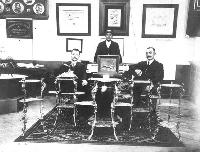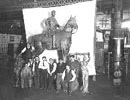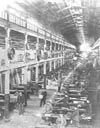Its beginnings
The birth of the School of Arts and Crafts (Escuela de Artes y Oficios, EAO), Alma Mater of our University, is related to the development needs of our country. The most important institutions in the middle of the 19th century, the National Society of Agriculture among them, demanded the introduction of practical and technical teaching with urgency, as a way of overcoming the problems that did not allow Chile’s progress.
These concerns influenced the creation of the School of Arts and Crafts by means of a decree, dated July 6th 1849, and issued by Manuel Bulnes, President of Chile and Manuel Montt, Minister of Justice, Cult and Public Instruction. In this document, Salvador Sanfuentes was appointed Superintendent of the School and the French teacher Jules Jariez was appointed Director. This decree was the result of a lot of previous work: designing study plans, hiring teachers abroad, looking for physical and monetary resources, to name but a few.
Another decree established the opening of the School on September 18th 1849 with Carpentry, Blacksmithing, Mechanics and Melting Workshops, for twenty four selected students, twelve from Santiago and twelve from provinces. The School had to provide the means “to build the future happiness gradually and be an important factor for the industrial progress.”
New Building
The School of Arts and Crafts increased its prestige. The growing number of students required an expansion and more teachers. In 1886, lands from the southern side of the Quinta Normal de Agricultura were assigned, on the Chuchunco Avenue (named Ecuador, at present) for the construction of its new and permanent building, which is nowadays a historical monument.
Institutional Solidity
The academic excellence and the contributions of the country transformed the School of Arts and Crafts in an outstanding development center. Students from different Latin American countries attended its classrooms.
The evolution and development process of the School in Santiago took place simultaneously with a similar process in the Schools of Mines in Copiapó, La Serena and Antofagasta which contributed to the growth of the mining industry in the north. Likewise, the Industrial Schools in Concepción, Temuco and Valdivia fulfilled the goal of preparing the labor force required for the regional industrial development.
These schools, which were created after the EAO, later became the provincial branches of the State Technical University.
In 1936, new plans were approved allowing the EAO to provide degrees of technical craft and industrial engineer. With the creation of CORFO in 1936 and the greatest industrial effort of the public sector, a qualitative and quantitative improvement was possible, and our institution became part of Chile’s wide development.




